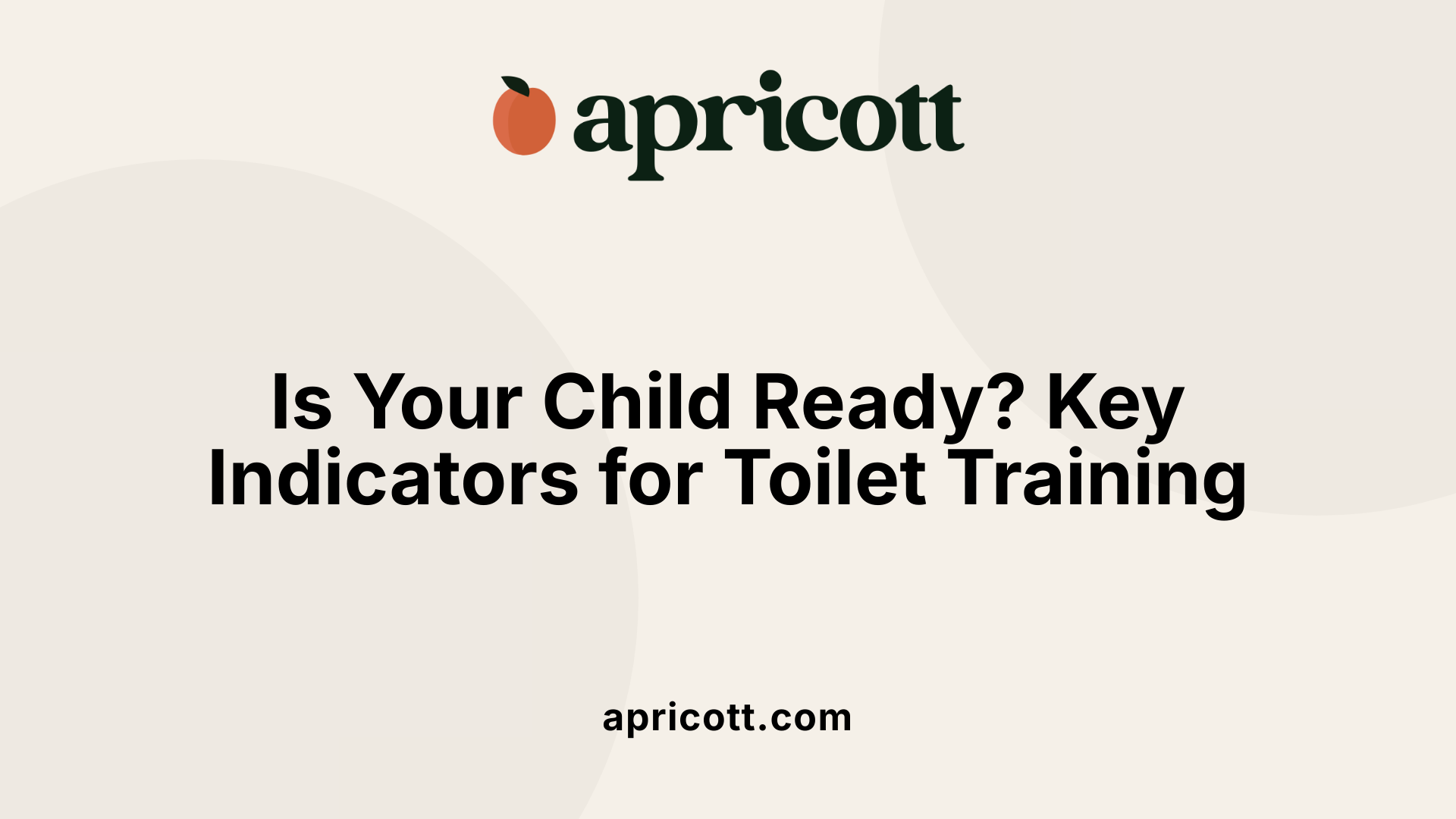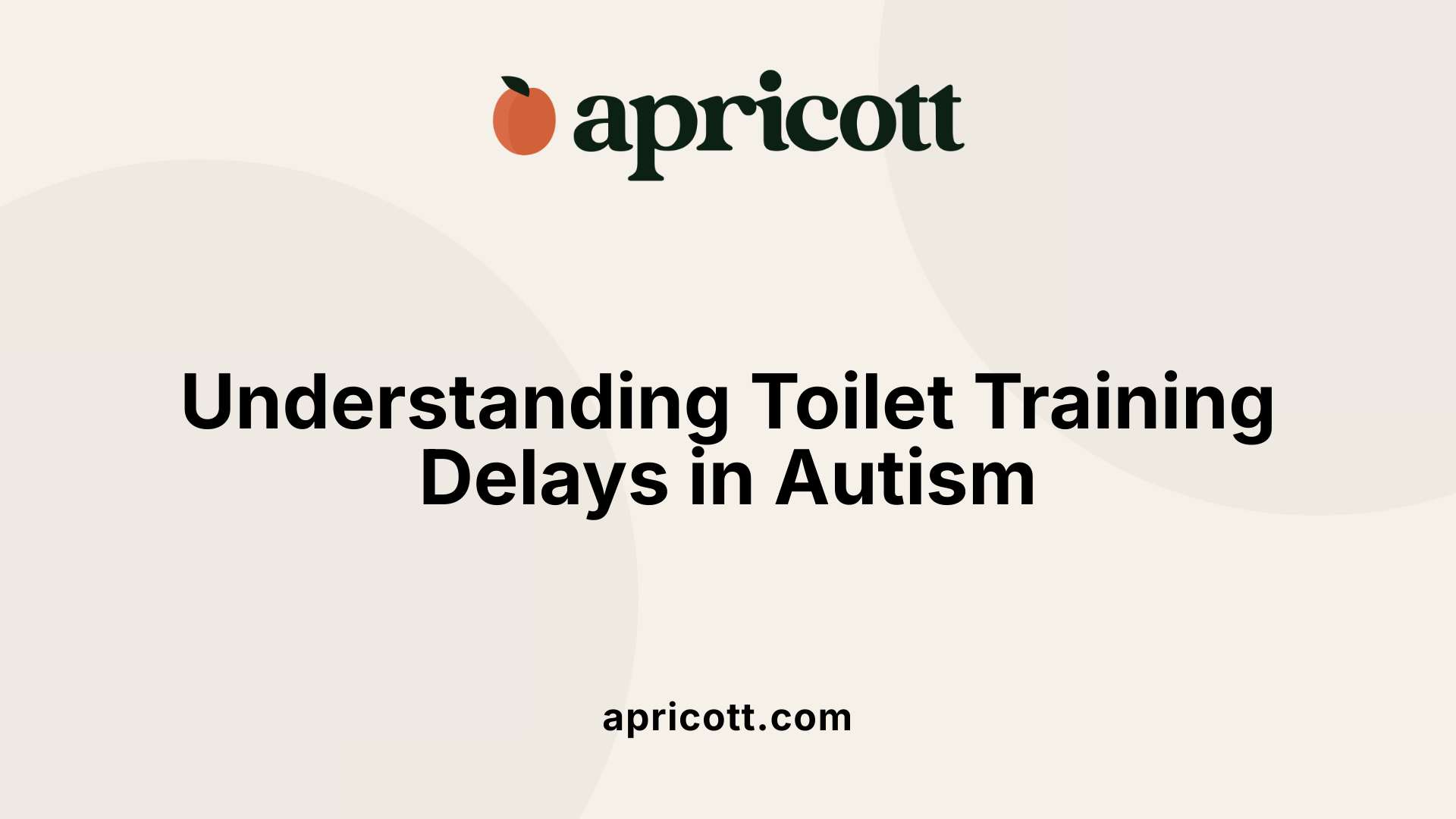July 23, 2025
Breaking Barriers: Effective Strategies for Toilet Training Children on the Spectrum
Potty training a child with autism presents distinctive challenges that require patience, understanding, and tailored strategies. Unlike neurotypical children, autistic children often experience developmental delays, sensory sensitivities, and communication barriers that influence their readiness and progress. Recognizing these specific factors and employing autism-specific approaches can lead to successful independence in toileting, ultimately enhancing the child's comfort, hygiene, and social participation.

Parents can observe various behaviors and signs indicating their child is prepared to start toilet training. A primary indicator is when the child stays dry for at least two hours during the day, demonstrating some bladder or bowel control.
Interest in bathroom routines or toilet equipment—such as looking at or trying to use the toilet—also suggests readiness. Children who show curiosity about what others are doing or imitate adults using the bathroom are often eager to participate.
The ability to understand and follow simple instructions is another important sign. For example, if a child can respond to directions like “sit on the potty” or “pull up your pants,” they are developing the necessary receptive language skills.
Additionally, skills such as pulling their pants up and down or bringing a soiled diaper to caregivers indicate increasing independence and bodily awareness. These behaviors show they are starting to recognize when they need to use the toilet.
Consistency in these behaviors across different settings and times reflects a growing awareness of bodily functions. Recognizing these cues helps caregivers decide the right time to begin structured toilet training.
It’s crucial to consider each child's unique developmental pace, sensory sensitivities, and communication preferences. Using visual supports, such as picture schedules or social stories, combined with positive reinforcement, can ease the process.
Before starting, consulting healthcare professionals can ensure medical issues like constipation are addressed, which can otherwise hinder progress. Overall, patience and gradual introduction are essential for successful toilet training in children with autism.
 Children with autism often begin toilet training later than their neurotypical peers. Typically, neurotypical children are ready to start potty training between the ages of 2½ and 3 years old. Most are able to achieve daytime independence by this age, with many staying dry during the day and understanding the basic routines of toileting.
Children with autism often begin toilet training later than their neurotypical peers. Typically, neurotypical children are ready to start potty training between the ages of 2½ and 3 years old. Most are able to achieve daytime independence by this age, with many staying dry during the day and understanding the basic routines of toileting.
However, children on the autism spectrum tend to experience delays, often reaching the point of consistent toileting skills around 3.3 years of age or even later. Some children may continue to have accidents well into their preschool years or beyond. This delay is influenced by various factors linked to autism, such as developmental delays, communication difficulties, sensory sensitivities, and behavioral routines.
The challenges these children face include understanding the sensation of needing to go, communicating their needs, and adapting to new routines. Sensory issues can make the bathroom environment overwhelming, and behavioral traits like insistence on sameness or resistance to change can hinder progress.
Compared to children with other developmental delays, children on the spectrum often take longer to become toilet trained. While children with other developmental challenges may start around 2.5 years old and progress steadily, autistic children might need more time to develop the necessary skills.
Effective strategies for equipping children with autism for toilet training involve visual supports such as picture charts or schedules, consistent routines, environmental modifications to reduce sensory discomfort, and positive reinforcement for successes. Patience and tailored approaches are essential.
Overall, the average age for toilet training in children with autism tends to be around 3.3 years, but this varies widely depending on individual needs. Recognizing these delays and supporting children through gradual, supportive training can lead to successful independence over time.

Potty training autistic children often involves navigating various unique challenges. Developmental delays mean that children may learn toilet skills later than their neurotypical peers. Communication hurdles can make it hard for them to signal when they need to go, leading to missed cues and frustration.
Sensory sensitivities are common, with issues like aversions to flushing sounds, cold or bright toilets, or rough toilet paper, which can cause resistance or refusal to use the bathroom. These sensory factors need environment modifications, such as adjusting lighting, using softer toilet paper, or introducing familiar comfort items.
Behavioral resistance—like fear of the toilet, resistance to flushing, or avoidance of sitting on the seat—may arise from anxiety, previous negative experiences, or sensory overload. Establishing a predictable routine and gradual exposure can help reduce these fears.
Maintaining consistency is critical. Inconsistent approaches across caregivers or environments can confuse the child and delay progress. It’s important to involve all involved adults and caregivers, using visual supports and simplified instructions to reinforce learning.
Medical issues like constipation frequently impact toilet training. Constipation can cause discomfort, making children more reluctant to use the toilet. Addressing such health issues with healthcare providers is an essential component of the process.
Finally, setbacks such as regressions into diaper use or fear-based behaviors are common. These setbacks may stem from adult stress, environmental changes, or physical discomfort. Patience, continuous positive reinforcement, and therapy support are needed to navigate hurdles.
Overall, successful toilet training for children with autism requires recognizing these challenges and applying strategic, individualized interventions. Techniques such as behavioral assessments, visual schedules, positive reinforcement, and collaboration with autism-savvy professionals can significantly improve outcomes. It’s crucial to approach toilet training with patience, flexibility, and understanding, celebrating small successes and viewing setbacks as part of the learning journey.

Toilet training children with autism involves a tailored, consistent, and patient approach that recognizes individual needs and challenges. Visual supports such as picture schedules, social stories, and timers are fundamental tools. These aids help children understand the sequence of steps, develop routines, and anticipate what comes next, reducing anxiety and confusion.
Recognizing early signs of readiness is crucial. Such signs include staying dry for at least two hours, following simple instructions, showing discomfort with soiled diapers, and demonstrating interest in bathroom activities. Starting the process when the child shows these cues ensures they are more receptive.
A gradual introduction works best—begin with frequent scheduled bathroom attempts, perhaps every 15 to 30 minutes, and increase their duration over time. Incorporating reinforcement immediately after successful attempts, such as praise, stickers, or preferred activities, motivates the child to continue engaging with the process.
Accidents are normal and should not be met with punishment. Instead, minimizing scrutiny and providing gentle, positive responses encourages the child to try again without fear or shame.
Using visual communication methods like symbols, social stories, or assistive devices allows children, especially nonverbal ones, to signal their need to use the bathroom. This enhances independence and reduces frustration.
Consistency across caregivers and environments strengthens learning. This means involving family, teachers, and therapists in creating and following the same routines.
Adjustments to the environment—like controlling lighting, reducing noise, or providing familiar objects—help make bathroom visits comfortable and less overwhelming.
Addressing individual challenges, such as sensory sensitivities or gastrointestinal issues, with professional guidance increases the likelihood of success. Combining these strategies with patience, flexibility, and ongoing evaluation creates a supportive pathway for toilet training children with autism, fostering independence and confidence.
Establishing a structured bathroom routine is vital for helping autistic children learn toilet skills. Routines create a predictable environment, which reduces anxiety and resistance. When children know what to expect, they feel more comfortable and confident in their abilities.
Using visual cues such as picture schedules, social stories, and visual supports reinforces these routines. These tools help children understand each step of the process and serve as gentle reminders, especially for nonverbal children or those with communication challenges.
Consistency across different environments—home, school, or daycare—is crucial. When caregivers and teachers follow the same procedures and cues, children experience a seamless transition, which strengthens their understanding and promotes skill retention.
Prompt fading and gradual independence are essential components. Initially, caregivers may provide close supervision and prompts, then slowly reduce assistance as the child gains confidence. This encourages the child to initiate bathroom visits independently.
Positive reinforcement, such as praise, stickers, or favorite activities, builds motivation and rewards small successes. Over time, this reinforcement boosts self-esteem and fosters a sense of achievement.
Carefully maintaining routines and consistency—combining visual supports, scheduled breaks, and ongoing encouragement—helps children develop habits over time. They learn to associate certain cues with toileting, leading to more successful and less stressful potty training.
In summary, routines and consistency provide a safe framework that nurtures learning, reduces uncertainty, and ultimately leads to more effective toilet training outcomes for children on the autism spectrum.
Supporting children who are nonverbal or have limited speech during toilet training requires patience, creativity, and the use of specific strategies. Visual supports are especially helpful in this process. Picture schedules, social stories, and visual cues tailored to the child's sensory preferences provide clear, understandable steps that help children grasp what is expected. These visual tools can include images of the bathroom, steps involved in toileting, or symbols indicating when to go.
Creating a routine that is predictable and consistent reduces anxiety and provides a sense of safety. Incorporating familiar items, such as a favorite toy or a preferred clothing item, can make the environment more comforting. Using a dedicated, calm space for toileting, with a child-friendly potty, further supports comfort and familiarity.
Reinforcing effort immediately through rewards such as praise, stickers, or preferred items keeps children motivated. Equally important is minimizing fuss over accidents, which discourages frustration and resistance. Instead, calmly guiding the child back to the routine and encouraging attempts promotes positive experiences.
Teaching alternative forms of communication is vital. Nonverbal children can learn to use gestures, signs, or picture exchange systems like PECS to indicate when they need to go to the bathroom. This fosters independence and helps the child express their needs clearly.
Seeking guidance from professionals such as speech-language pathologists or occupational therapists can enhance strategies tailored to the child's individual needs. Their expertise supports effective communication development and sensory accommodations.
With patience, consistent routines, visual supports, and professional assistance, caregivers can effectively support nonverbal children through the toilet training journey, building confidence and independence.
Parents and caregivers seeking to support children with autism in developing toileting skills have access to a variety of valuable resources and expert guidance. One prominent resource is the Autism Speaks ATN/AIR-P Toilet Training Guide. This comprehensive manual offers tailored strategies that include visual schedules, social stories, and video modeling, all designed to help children understand and follow the steps involved in toileting.
These guides emphasize the importance of collaborating with professionals such as occupational therapists, speech therapists, and behavior analysts. Their expertise can help create individualized routines that address each child's unique sensory sensitivities and developmental needs. For example, environmental modifications—like adjusting lighting, controlling noise levels, and introducing familiar objects—are recommended to make the bathroom less intimidating.
In addition to printed guides, caregivers can benefit from digital tools such as the AIDE Canada Self-Care Toolkit, which contains practical activities, visual supports, and instructions to reinforce toileting independence. Webinars and online training sessions provide ongoing education and support, sharing research-based tactics and success stories.
Using visual supports like picture schedules, social stories, and video modeling has proven especially effective in teaching children with autism. These tools help break down complex routines into simple, manageable steps, making learning more accessible. Consistent reinforcement, patience, and a positive attitude are critical throughout the process.
In summary, a combination of specialized guides, professional support, visual tools, and environmental adaptations equips caregivers to foster independence and confidence in children with autism as they learn toileting skills. The goal is to create a supportive, predictable environment that promotes success and minimizes frustration.
Children on the autism spectrum often face hurdles when trying to master toilet skills. Sensory sensitivities are a frequent issue—bright lights, loud sounds, or the feel of toilet paper can cause discomfort or fear. Additionally, resistance to routines, delays in language or motor skills, and medical issues like constipation can slow progress or lead to setbacks.
Managing these difficulties requires patience and a strategic approach. Using visual supports, such as picture schedules, social stories, or video modeling, helps children understand what to expect and reduces anxiety. It’s also important to adjust environmental factors—controlling lighting, minimizing noise, and introducing familiar objects can make the bathroom more welcoming.
Gradually familiarizing children with the toilet, rewarding small successes, and avoiding punishment during accidents promote a positive experience. Sometimes, consulting professionals like behavior analysts or occupational therapists provides personalized strategies that cater to the child's unique sensory and behavioral needs. These tailored interventions support progress and help children overcome specific fears or resistance, making toilet training a smoother journey.
While potty training a child on the autism spectrum can be a complex and gradual process, success is achievable with tailored strategies, patience, and support. Recognizing signs of readiness, establishing routines, utilizing visual supports, and maintaining consistency across environments empower children to develop independence and confidence in toileting. Addressing sensory sensitivities, managing setbacks with resilience, and collaborating with professionals enhances outcomes. Every child's journey is unique, but with ongoing encouragement and understanding, parents and caregivers can help their children attain greater self-care skills, leading to improved health, hygiene, and social inclusion.